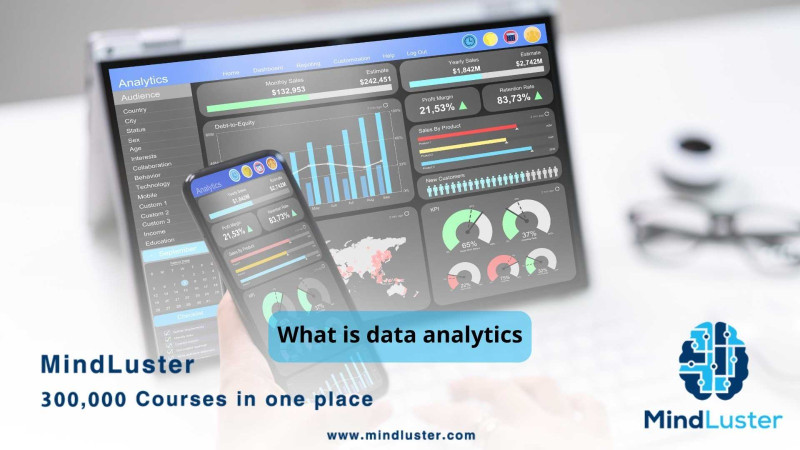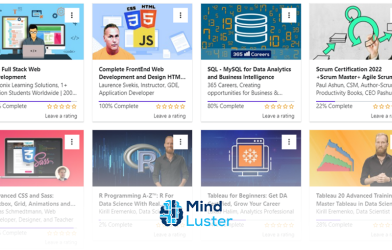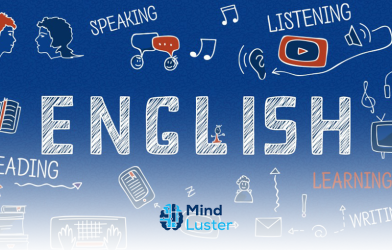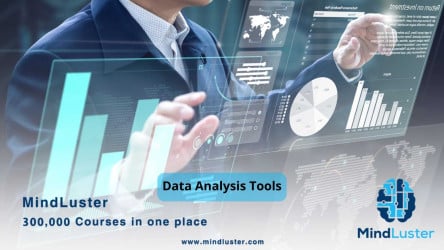Have you ever felt like companies are reading your mind, and searching for a product or service suddenly floods you with ads everywhere you go online? Don’t worry; companies are not spying on you or breaking your privacy; it's just the power of data analytics.
If you are interested in starting a career as a data analyst or just curious about how the process works, you have come to the right place. This blog will provide a comprehensive guide to this powerful tool, exploring its applications, the intricate processes involved, and everything you need to know to harness its capabilities effectively.
What is data analytics?
Data analytics is a broad term that encompasses many types of data analysis. Still, in a nutshell, it is reading what is behind every click, search, number, online behavior, and many more. Understanding what is data analytics gives companies the power to analyze trends and indicators that would most probably get lost in a huge flood of information.
For example, in the healthcare industry, hospitals often track patient admission rates, discharge times, and staff availability. By analyzing this data, they can better allocate resources and optimize staff schedules to ensure a higher quality of patient care and more efficient hospital operations.
As we have mentioned before, data analytics is a broad term that includes many types; in the next section, we will zoom in and learn what they are to help you understand data analytics more.
Types of data analytics
We can split data analytics into four primary types, each serving a certain purpose and providing its unique insights, and they are:
Descriptive analytics
It focuses on understanding historical data to understand better what happened in a certain period. Understanding what is data analytics helps you analyze trends, patterns, and abnormalities in a past period, providing a clear overview of how the business has performed and helping you forecast what the business can do in the future. For example, A retail company might use descriptive analytics to analyze sales data from the past year, identifying peak shopping periods and popular products.
Diagnostic Analytics
Delves deeper into data to understand the reason behind specific past outcomes. It involves examining data to determine the causes of specific events or trends, often using techniques like drill-down, data discovery, and correlations. For example, An e-commerce company might use diagnostic analytics to investigate why there was a sudden drop in website traffic, examining factors such as marketing campaigns, website changes, or external events.
Predictive analytics
Predictive analytics uses historical data and statistical models to forecast future events. By identifying patterns and relationships in the data, this type of analytics can provide insights into what is likely to happen, helping businesses anticipate trends and plan accordingly. For example, a financial institution might use predictive analytics to forecast future stock market trends, helping investors make informed decisions based on predicted market movements.
Prescriptive analytics
Predicts future outcomes and recommends actions to achieve desired results. It uses advanced algorithms and machine learning to suggest the best courses of action based on data-driven insights. For example, logistics companies could use it to optimize delivery routes and recommend the most efficient paths to reduce fuel consumption and delivery times.
Learn more in our Data Analytics foundations for beginners
After knowing the four main types, let’s help you understand data analytics by mentioning its importance.
Why is data analytics important?
Understanding and applying the various types of data analytics can empower businesses to make more informed decisions, optimize their operations, and stay competitive in their respective markets. To be more precise, we can outline the benefits of understanding what is data analytics as follows:
Informed Decision-Making
Businesses that use data analysis have a greater chance of making more informed and strategic decisions. By analyzing data, organizations can understand trends, patterns, and relationships, leading to better forecasting across various aspects of the business.
Efficiency and Optimization
Data analytics helps organizations optimize their operations by identifying inefficiencies and areas for improvement. This can lead to cost savings, better resource allocation, and improved processes.
Customer Insights
Understanding and applying data analytics allows businesses to better understand their customers' preferences, behaviors, and needs. This information is invaluable for creating targeted marketing strategies, improving customer satisfaction, and building loyalty.
Competitive Advantage
If your business understands and utilizes data analytics, you can gain a significant competitive edge. By leveraging insights from data, you can innovate faster and respond more quickly to changes.
Risk Management
Predicting what could happen helps you manage risks more easily, and this is where understanding what is data analytics plays a crucial role.
Data analytics applications
Data analytics can be used in several fields and applications, from healthcare to finance, retail, manufacturing, marketing, telecommunications, energy and utilities, transportation and logistics, and beyond. Here are some main sectors where data analytics is commonly applied:
Healthcare
The healthcare sector can use predictive analytics to forecast patient admission rates and resource requirements. Analyzing patients' data helps in clinical decision support and assists professionals in diagnosis and treatment decisions. Additionally, understanding what is data analytics in the healthcare field helps identify at-risk populations and design targeted preventive care interventions.
Retail
Understanding what is data analytics, such as customer segmentation, inventory optimization, and market basket analysis, can have many significant benefits for the retail field.
Finance
The financial sector is one of the most benefited from understanding data analytics. It helps them manage risks, assess credit risk, detect fraud cases, and optimize portfolios. Also, it plays a significant role in algorithmic trading by using predictive analysis to identify trading options and opportunities and optimize investment strategies.
Inside the data analytics process
There are several key aspects involved in transforming key steps into well-actionable insights. These steps typically include:
- Data Collection: where you collect data from various sources, such as databases, sensors, and websites.
- Data Cleaning: Since accuracy and reliability are important, in the data cleaning phase you begin removing inconsistencies, errors, and duplicates from the dataset in the data cleaning phase.
Check our data cleaning with Python course now for free
- Data Exploration: Using visualization and statistical analysis approaches, you must examine the dataset more thoroughly to comprehend its structure, trends, and relationships.
- Data Preparation: Prepare your data for analysis by transforming and arranging it into a modeling-ready format.
- Modeling: Depending on statistical and machine learning approaches, the data analyst creates predictive or descriptive models that extract insights from data.
- Evaluation: Assessing the models' performance to confirm their validity and efficacy in solving the problem.
- Interpretation: Interpreting the analytic data to obtain useful insights and recommendations.
- Visualization and Reporting: Visualizations, reports, and dashboards clearly and intelligibly show information.
- Deployment: Following the steps mentioned, you implement insights and recommendations into company processes or decision-making to achieve beneficial results.
To sum up, numbers can tell you a lot about the future, and understanding what is data analysis is your shield in doing so. With our free courses in Mindluster, you can empower yourself with the knowledge and skills needed to excel in understanding data analysis, all at no cost.









